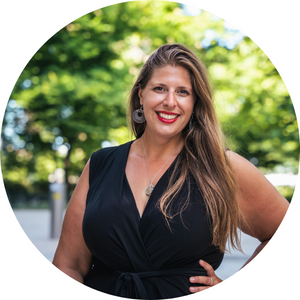Who are the unbanked in Canada?
Today there are generally three categories of people who define themselves as unbanked:
- The Branchless – those who place their money in the care of financial institutions that exist entirely online.
- The Underbanked – those who do have a traditional bank account of some kind, but are unable to qualify for any kind of credit through a traditional bank, so they turn to alternative sources for their credit needs.
- The Truly Unbanked – those who do not have a chequing or savings account of any kind.
The branchless
In 2016, Mintel’s research showed that the unbanked are more open to peer-to-peer lending and virtual banks—banks that don’t have physical branches and provide financial services via a website or an app. Widely-known virtual banks in Canada include EQ, Manulife Bank and Tangerine. Peer-to-peer lenders lend money via online platforms without a physical intermediary. Some of the best-known peer-to-peer lenders include Loans Canada, LoanConnect and Borrowell.
Virtual banks and peer-to-peer lending are relatively new concepts, and have characteristics that will suit some consumers very well and others not at all.
Less fees, more perks
Companies like EQ Bank and Tangerine skip the substantial overhead costs of maintaining physical branches, and this allows them to pass on the savings to their customers. Monthly banking fees are reduced or completely eliminated, and there are typically no minimum balance requirements. The branchless might also benefit from unlimited transactions, free electronic funds transfers and higher interest rates on savings and investment accounts than they would get from a traditional bank.
For example, the savings account interest rate with EQ Bank’s Savings Plus Account is 2.50%*, while TD’s everyday savings account generates a paltry percentage in comparison.
- Interest is calculated daily on the total closing balance and paid monthly. Rates are per annum and subject to change without notice.
Hybrid products
Digital financial institutions may also offer innovative, hybridized products and services that traditional banks don’t. A good example is Wealthsimple, whose Wealthsimple Save product aims to combine the interest of a savings account with some of the functionality of a chequing account. Chequing-like features for Wealthsimple Save—including a prepaid card, bill pay, and ATM withdrawals—are yet to debut. But if all its planned functionality is realized, Wealthsimple Save will likely lure many Canadians away from old-school bank accounts and into unbanked territory.
Account access and management from anywhere
Branchless customers are completely untethered. Not only do they pay bills, transfer funds and receive or send money from anywhere on any mobile device or desktop, but they can also apply for a mortgage, line of credit, RSP or other investment. Sure, there are apps for the big banks too, but they’re often still integrated with going into the branch to discuss loans and investing. If you’re already independent-minded or too busy to want to meet with a financial services professional inside a physical building, branchless banking might be for you.
But not everyone is comfortable with digital-only banking. Though Tangerine does have its own version of branches (called ‘cafes’) and various pop-up kiosks, they are only in major Canadian cities and are generally geared toward opening accounts and applying for the Tangerine Money-Back Credit Card, rather than servicing existing customers.
“When it comes to Tangerine, in my opinion the pros and cons are roughly similar to a brick and mortar bank, but people may want a physical branch because they’ll say, ‘What if something happens? I want to be able to go somewhere,’” says Dylan Gordon, an applied anthropologist at the University of Toronto who works in financial services innovation. “I think people still have that psychological barrier to their money not having a physical presence.”
Not connected to the ATM/Debit network
While it’s easy to manage your account and pay your bills if you go branchless, it’s more difficult to actually get your money out as cash. “EQ is another level down because it’s not connected to the ATM network,” says Gordon.
Cheques are also not available, but what you can do is transfer money between EQ and any other linked account that does have ATM access as well as transfers between EQ accounts. You can also transfer money using e-transfers, but you only get five free transfers per month. After that, it costs $1.50 within those 30 days.
Tangerine is a bit more cash friendly, as it is integrated into Scotiabank’s ATM network, but more and more people are going cashless these days, so this one is more a personal preference.
Product and service options are limited
Branchless banks typically don’t offer as many services or products as their traditional banking counterparts. EQ currently provides only a savings account and GICs; Tangerine offers chequing, savings, investments, loans (including mortgages) and credit cards, but there are only one or two unique products in each of those categories. Traditional banks typically offer the full gamut of financial product categories, with special products for different types of consumers (small business owners, seniors, immigrants, etc.)
The underbanked
Research from Mintel indicates that 28% of Canadians are underbanked—they have a basic bank account, like a chequing account, but use an alternative financial services provider for everything else. According to the Canadian Consumer Finance Association, over 2 million Canadians turn to alternative loan providers because they don’t qualify for a loan from a traditional financial institution. Though this indicates they’re not underbanked by choice, there are nonetheless perks to using alternative credit providers.
Lower barrier for entry; more flexibility
Those who apply for a loan or line of credit from a bank typically need a good to excellent credit score to be approved (depending on the amount of the loan). The application also requires a credit check and some applicants may need to present tax filings to prove a certain amount of annual income for at least two years. The underbanked may gravitate to alternative financial providers as a means of avoiding the bureaucracy of a traditional bank.
“If you talk to customers who use our service, convenience is certainly a factor,” says Tony Irwin, president and CEO of the Canadian Consumer Finance Association, which represents the majority of Canada’s regulated small-sum, short-term lenders.
“They like the fact that they’re able to come in and obtain a loan relatively quickly without all of the hoops they’ve had to go through at other places.”
Filling out the paperwork to apply for a loan through a traditional bank could take an hour. But application requirements from alternative, short-term lenders are typically less complicated: applicants usually need to provide proof of a steady income, a checking account, an email address, a phone number and government issue ID, with additional documents possibly required for first-time borrowers.
What’s more, bad credit will not necessarily preclude applicants from obtaining a loan and approval is generally more likely than it would be with a bank. Alternative lenders also loan amounts between $120 to $1,500—much lower than traditional banks are willing to lend.
“It’s not possible to walk into a bank and get a loan for $300…banks simply don’t provide that kind of loan to anybody. It doesn’t matter how good your credit is or your circumstances,” notes Irwin.
Greater choice
Canada’s oligopoly of five major banks results in relatively little competition in the banking sector, making terms, interest rates, fees and services all very similar from one traditional bank to next. The Big 5 have even been known to coordinate their actions and raise their fees at the same time.
By contrast, five banks expands to 1,400 retail outlets across the country when Canadians consider private payday and instalment lenders. If you include alternative financial institutions and credit card issuers, such as EQ and Tangerine or Home Trust and PC financial, that number expands even further. Competition breeds a wide variety of options, terms and rates that you just can’t find with major banks.
“The brick and mortar banks generally are not the most competitive option. Even for mortgages there are other lenders that may be a few points lower and for investments the brick and mortar banks are certainly not competitive.” says Gordon.
But alternative lenders have their detriments as well:
Higher interest rates
It’s no secret that alternative loans, also referred to as ‘payday loans’, are high-cost loans. Though the exact percentages vary according to provincial regulations, they are generally much higher than interest rates offered by traditional banks. Take a look:
Payday loans
- The APR on a $300 14-day payday loan from MoneyMart.ca in B.C. and Saskatchewan is 443.21% at a rate of $17.00 per $100 borrowed.*
- The APR on a $500 14-day payday loan from MoneyMart.ca in Ontario is 391.07% with the cost of borrowing being $75 on a $575.00 paycheque. The maximum allowable cost of borrowing is $15.00 for every $100.00 borrowed.****
- The APR on a $300 42-day loan from MoneyMart.ca in Alberta is 201.84% at $15.00 per $100 borrowed.*
- Of course, APR stands for annual interest rate, so that rate listed is divided by 365 and applied to each day of the loan term.
Instalment loans
The APR for MoneyMart.ca instalment loans is 59.90% with the repayment terms between 12 and 60 days. A $3,000 loan for 12 months commencing on Jan. 1 would have a monthly payment of $388.77 with a disclosed cost of borrowing of $1,054.51, and a total payback cost of $4,054.51.
Bank Loans & Lines of Credit
The interest rates on traditional bank loans or lines of credit can either be fixed or variable and though they vary, they are usually somewhere near prime (between 3 and 5%) and borrowers usually have up to five years to pay them back.
The possibility of predatory lending
Though the loan industry has become increasingly more regulated since 2007, when payday loans were taken out of the Criminal Code of Canada and given to the provinces to regulate, there are still entities that engage in predatory lending. Regulated companies struggle to distinguish themselves from bad actors who are abusive, unfair or fraudulent in the terms of the loan or the fees that they charge.
“Anyone that goes into a storefront lender in Canada is dealing with a licensed lender because provincial and municipal governments are sending inspectors in to make sure regulatory frameworks are being followed,” says Irwin.
“But once you go online it’s a different situation, and while there are many companies who provide loans online and follow regulations, there are many that do not and this is something provincial governments are often grappling with by asking, ‘How do we do a better job of distinguishing between the ones who are following regulations and the ones who are not?’”
Here are some telltale signs of disreputable lenders:
- Charging $30.00 per $100 or more for a payday loan (far above any regulated rate in Canada which is usually $15.00 per $100)
- Automatically approving borrowers for instalment loans at extremely low rates
- Requiring the customer to pay a ‘verification’ or ‘admin’ fee before the borrower has received their loan money
- Charging ‘hidden fees’, leading borrowers to think they’re paying off the principal of their loan, when they are actually paying off a hidden admin fee while the principal compounds.
“We try to bring awareness of these companies by putting notices on our website, but as fast as we bring attention to them, they’re gone,” says Irwin.
The industry is regulated in every province except Quebec and Newfoundland, but those who seek financial products outside the mainstream—the ‘underbanked’—should be hyper-vigilant in researching the terms of loans and credit products they apply for.
The truly unbanked
To be honest, there aren’t a lot of benefits to not having a chequing account of any kind, especially if you want to participate in a country where capitalism touches everything.
According to a February 2016 report from UK-based market research firm Mintel, unbanked Canadians are the following:
- 58% are men
- 65% are aged 18-34
- 19% are born outside of Canada
- 28% are unemployed, retired or unable to work
- 39% are students
- 40% have a high school diploma or less
- 12% are rural residents
- 46% have an income of $50,000 or less
- 35% have an income of $75,000 or more
And it’s a delicate subject, because many people are not unbanked by choice.
“There’s some element of choice, but there’s also those Canadians who don’t have the right I.D., who don’t have a fixed address, who don’t have the transaction volume, who know the bank won’t cash their cheques anyway and there are no branches in their community,” says Gordon.
“I think often unbanked means the person isn’t the actor, it’s the bank. The bank is unbanking you,” he adds.
A mechanism of exclusion
“Even if the unbanked are not a large number of people in Canada, the fact that it’s a mechanism of exclusion and inequality makes it important,” says Gordon.
If you’ve been unbanked for a long-time and you want to come in from the cold and re-establish or initiate a banking relationship, Canada’s banks have financial literacy programs and other low barriers to get the completely unbanked back on their financial feet.
“I”m pretty sure the large chartered banks cannot decline to give you an account. You have to satisfy their compliance conditions in the sense that you have to be able to prove your identity, but they can’t just not give you an account,” Gordon continues.
“So if you’re starting to cash a lot of cheques, then you probably should just bite the bullet, get the documents required and open an account.”
Even if a traditional bank won’t entirely meet your needs, the above proves that there are plenty of alternative financial products out there. You might even find a happy medium for your finances by trying out branchless banking or seeking alternative lenders.







